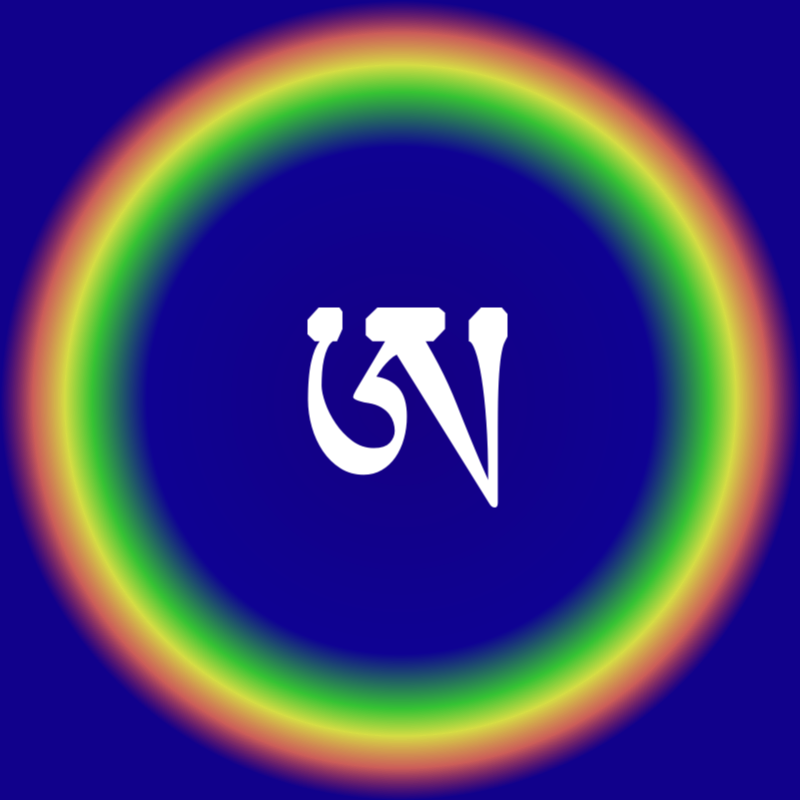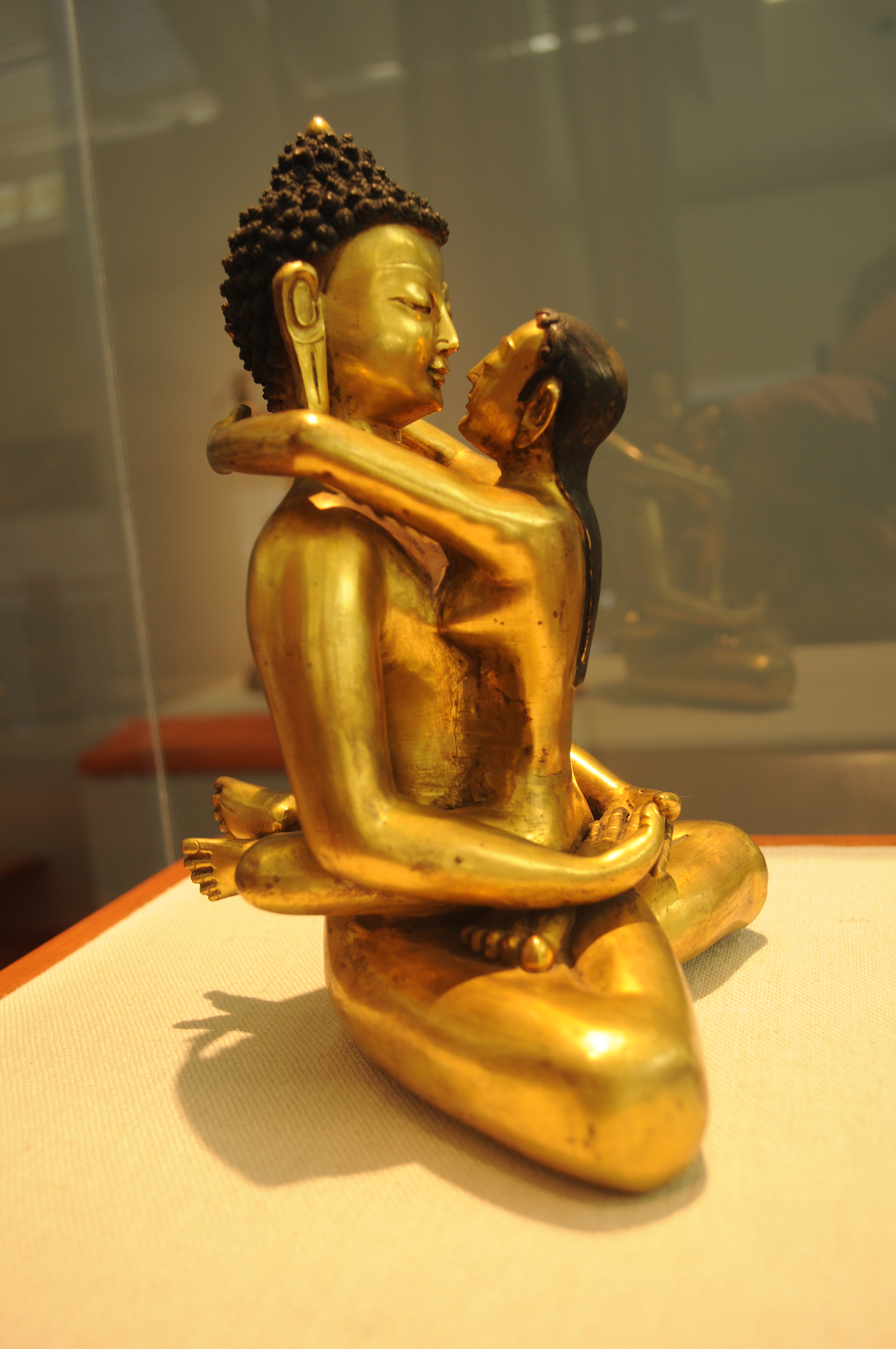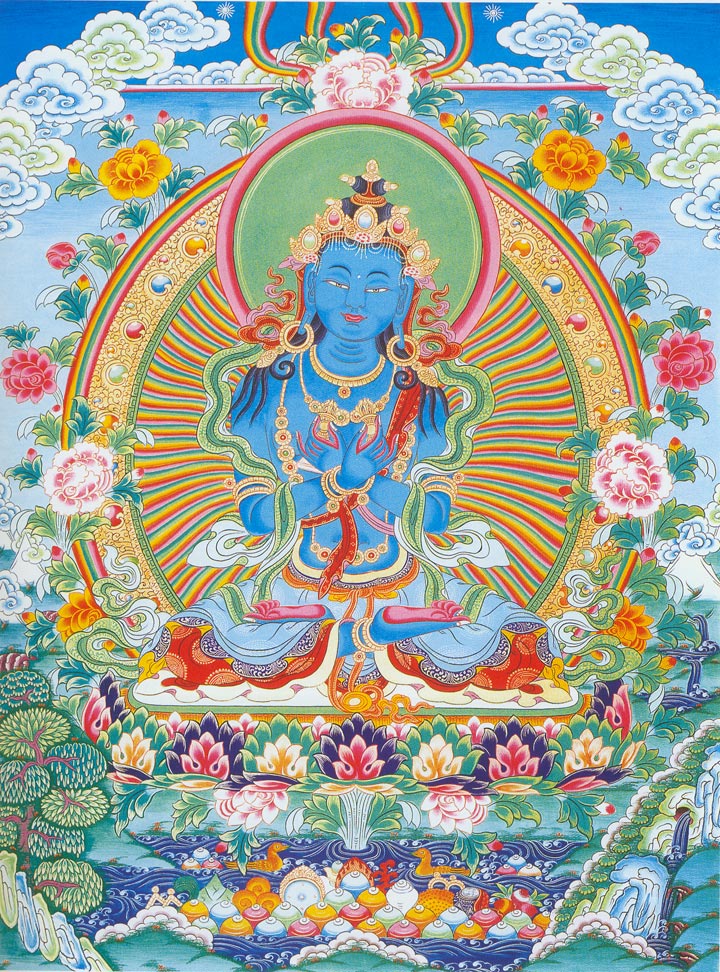|
Rigpa
In Dzogchen, ''rigpa'' (; Skt. vidyā; "knowledge") is knowledge of the ground. The opposite of ''rigpa'' is ''ma rigpa'' ('' avidyā'', ignorance). A practitioner who has attained the state of ''rigpa'' and is able to rest there continuously is called a ''Rigdzin'' (see Vidyadhara), which may be used as a title either pre- or post-nominally. ''Rigpa'' (knowledge) ''Rigpa'' (Sanskrit: ''vidyā'', 'knowledge') is a central concept in Dzogchen. According to Ācārya Malcolm Smith: ''Rigpa'' is the knowledge of the ground. It has also come to mean the 'pristine awareness' that is the fundamental ground itself. Erik Pema Kunsang translates a text which provides basic definitions of ''rigpa'' and ''ma rigpa'' in a Dzogchen context: Rigpa has two aspects, namely ''kadag'' and ''lhun grub''. ''Kadag'' means "purity" or specifically "primordial purity". ''Lhun grub'' in Tibetan normally implies automatic, self-caused or spontaneous actions or processes. As quality of ''rigp ... [...More Info...] [...Related Items...] OR: [Wikipedia] [Google] [Baidu] |
Dzogchen A
Dzogchen (, "Great Perfection" or "Great Completion"), also known as ''atiyoga'' ( utmost yoga), is a tradition of teachings in Indo-Tibetan Buddhism and Yungdrung Bon aimed at discovering and continuing in the ultimate ground of existence. The primordial ground (''gzhi'', "basis") is said to have the qualities of purity (i.e. emptiness), spontaneity (''lhun grub'', associated with luminous clarity) and compassion (''thugs rje''). The goal of Dzogchen is knowledge of this basis, this knowledge is called ''rigpa'' (Skt. ''vidyā''). There are numerous spiritual practices taught in the various Dzogchen systems for awakening rigpa. History Dzogchen developed in the Tibetan Empire period and the Era of Fragmentation (9th-11th centuries) and continues to be practiced today both in Tibet and around the world. It is a central teaching of the Yundrung Bon tradition as well as in the Nyingma school of Tibetan Buddhism. In these traditions, Dzogchen is the highest and most defi ... [...More Info...] [...Related Items...] OR: [Wikipedia] [Google] [Baidu] |
Non-dual
Nondualism, also called nonduality and nondual awareness, is a fuzzy concept originating in Indian philosophy and religion for which many definitions can be found, including: nondual awareness, the nonduality of seer and seen or nondifference of subject and object; the identity of conventional phenomena and ultimate reality, or the "nonduality of duality and nonduality"; metaphysical monism, the nonplurality of the world and "the interconnection of all things." It may also refer to a negation of dualistic thinking; and to the mystical unity with God or with Ultimate reality. The English term is derived from Sanskrit terms such as "advaita" (अद्वैत), "not-two" or "one without a second," which in various Hindu philosophies refers to the identity of ''Atman'' and ''Brahman''; and ''advaya'', also meaning "not two," but referring to various Buddhist ideas such as the identity of conventional and ultimate reality. In Indian philosophy, these terms refer to se ... [...More Info...] [...Related Items...] OR: [Wikipedia] [Google] [Baidu] |
Ground (Dzogchen)
In Dzogchen, the ground or base () is the primordial state. It is an essential component of the Dzogchen tradition for both the Bon tradition and the Nyingma school of Tibetan Buddhism. Knowledge of this ''ground'' is called ''rigpa''. Explication A key concept in Dzogchen is the 'basis', 'ground' or 'primordial state' (Tibetan: གཞི་ ''gzhi''), also called the general ground (སྤྱི་གཞི་ ''spyi gzhi'') or the original ground (གདོད་མའི་གཞི་ ''gdod ma'i gzhi''). The basis is the original state "before realization produced buddhas and nonrealization produced sentient beings". It is atemporal and unchanging and yet it is "noetically potent", giving rise to mind (སེམས་ ''sems,''), consciousness (ཤེས་པ་ ''shes pa''), delusion (མ་རིག་པ་ ''marigpa'') and knowledge (རིག་པ་་''rigpa''). Furthermore, Hatchell notes that the Dzogchen tradition portrays ultimate reality as something which is " ... [...More Info...] [...Related Items...] OR: [Wikipedia] [Google] [Baidu] |
Avidyā (Buddhism)
Avidyā (Sanskrit: अविद्या; Pāli: अविज्जा, ''Avijjā''; Tibetan phonetic: ''ma rigpa'') in Buddhist literature is commonly translated as "ignorance". The concept refers to ignorance or misconceptions about the nature of metaphysical reality, in particular about the impermanence and '' anatta'' doctrines about reality. It is the root cause of '' Dukkha'' (suffering, pain, unsatisfactoriness), and asserted as the first link, in Buddhist phenomenology, of a process that leads to repeated birth. Avidyā is mentioned within the Buddhist teachings as ignorance or misunderstanding in various contexts: * Four Noble Truths * The first link in the twelve links of dependent origination * One of the three poisons within the Mahayana Buddhist tradition * One of the Mental factors (Buddhism)#Six root unwholesome factors">six root kleshas within the Mahayana Abhidharma teachings * One of the ten fetters in the Theravada tradition * Equivalent to moha within the ... [...More Info...] [...Related Items...] OR: [Wikipedia] [Google] [Baidu] |
Menngagde
In Tibetan Buddhism and Bon, Menngagde (, sa, upadeśavarga), is the name of one of three scriptural and lineage divisions within Dzogchen (''Great Perfection'' ). Dzogchen is itself the pinnacle of the ninefold division of practice according to the Nyingma school of Tibetan Buddhism. Menngagde focuses on rigpa. The Menngagde or 'Instruction Class' of Dzogchen teachings are divided into two parts: ''trekchö'' and ''tögel''. Practice For general purposes, Menngagde may also be known as Nyingthik. Germano & Gyatso (2000: p. 240) note a similarity of practice between Chan-like formless meditations and Nyingthik/Menngagde: In the Dzogchen textual tradition Traditionally, Mañjuśrīmitra () is said to have classified all the Dzogchen teachings transmitted by his teacher, Garab Dorje, into three series: semdé (), Longdé (), and menngagdé. Mañjuśrīmitra's student Sri Singha reedited the oral instruction cycle and in this form the teaching was transmitted to Jñ ... [...More Info...] [...Related Items...] OR: [Wikipedia] [Google] [Baidu] |
Vidya (Knowledge)
''Vidya'' ( sa, विद्या, ) figures prominently in all texts pertaining to Indian philosophy Indian philosophy refers to philosophical traditions of the Indian subcontinent. A traditional Hindu classification divides āstika and nāstika schools of philosophy, depending on one of three alternate criteria: whether it believes the Veda ... – meaning science, learning, knowledge, and scholarship. Most importantly, it refers to valid knowledge, which cannot be contradicted, and true knowledge, which is the Intuition#Eastern philosophy, intuitively-gained knowledge of the Paramatman, self. ''Vidya'' is not mere intellectual knowledge, for the Vedas demand understanding. Meaning ''Vidya'' primarily means "correct knowledge" in any field of science, learning, philosophy, or any factual knowledge that cannot be disputed or refuted. Its root is ''vid'' (Sanskrit: विद्), which means "to reason upon", knower, finding, knowing, acquiring or understanding. Hindui ... [...More Info...] [...Related Items...] OR: [Wikipedia] [Google] [Baidu] |
Sun Behind The Dark Clouds
The Sun is the star at the center of the Solar System. It is a nearly perfect ball of hot plasma, heated to incandescence by nuclear fusion reactions in its core. The Sun radiates this energy mainly as light, ultraviolet, and infrared radiation, and is the most important source of energy for life on Earth. The Sun's radius is about , or 109 times that of Earth. Its mass is about 330,000 times that of Earth, comprising about 99.86% of the total mass of the Solar System. Roughly three-quarters of the Sun's mass consists of hydrogen (~73%); the rest is mostly helium (~25%), with much smaller quantities of heavier elements, including oxygen, carbon, neon, and iron. The Sun is a G-type main-sequence star (G2V). As such, it is informally, and not completely accurately, referred to as a yellow dwarf (its light is actually white). It formed approximately 4.6 billionAll numbers in this article are short scale. One billion is 109, or 1,000,000,000. years ago from the grav ... [...More Info...] [...Related Items...] OR: [Wikipedia] [Google] [Baidu] |
Four Visions (Dzogchen)
4 (four) is a number, numeral and digit. It is the natural number following 3 and preceding 5. It is the smallest semiprime and composite number, and is considered unlucky in many East Asian cultures. In mathematics Four is the smallest composite number, its proper divisors being and . Four is the sum and product of two with itself: 2 + 2 = 4 = 2 x 2, the only number b such that a + a = b = a x a, which also makes four the smallest squared prime number p^. In Knuth's up-arrow notation, , and so forth, for any number of up arrows. By consequence, four is the only square one more than a prime number, specifically three. The sum of the first four prime numbers two + three + five + seven is the only sum of four consecutive prime numbers that yields an odd prime number, seventeen, which is the fourth super-prime. Four lies between the first proper pair of twin primes, three and five, which are the first two Fermat primes, like seventeen, which is the third. On the ... [...More Info...] [...Related Items...] OR: [Wikipedia] [Google] [Baidu] |
Adi-Buddha
In Vajrayana Buddhism, the Ādi-Buddha () is the "First Buddha" or the "Primordial Buddha". Another common term for this figure is Dharmakāya Buddha. The term emerges in tantric Buddhist literature, most prominently in the Kalachakra.Buswell, Robert E.; Lopez, Jr., Donald S. (2013). ''The Princeton dictionary of Buddhism''. Princeton: Princeton University Press. . Entry on "ādibuddha". "Ādi" means "first", such that the Ādibuddha was the first to attain Buddhahood. "Ādi" can also mean "primordial", not referring to a person but to an innate wisdom that is present in all sentient beings. In Indo-Tibetan Buddhism In Indo-Tibetan Buddhism, the term Ādibuddha is often used to describe the Buddha Samantabhadra (in Nyingma), Vajradhara or Kalachakra (in the Sarma schools).Wayman, Alex; The Buddhist Tantras: Light on Indo-Tibetan esotericism, page 53. There was also a tradition in India which saw Mañjuśrī as the Ādibuddha, as exemplified by Vilāsavajra's commentary ... [...More Info...] [...Related Items...] OR: [Wikipedia] [Google] [Baidu] |




